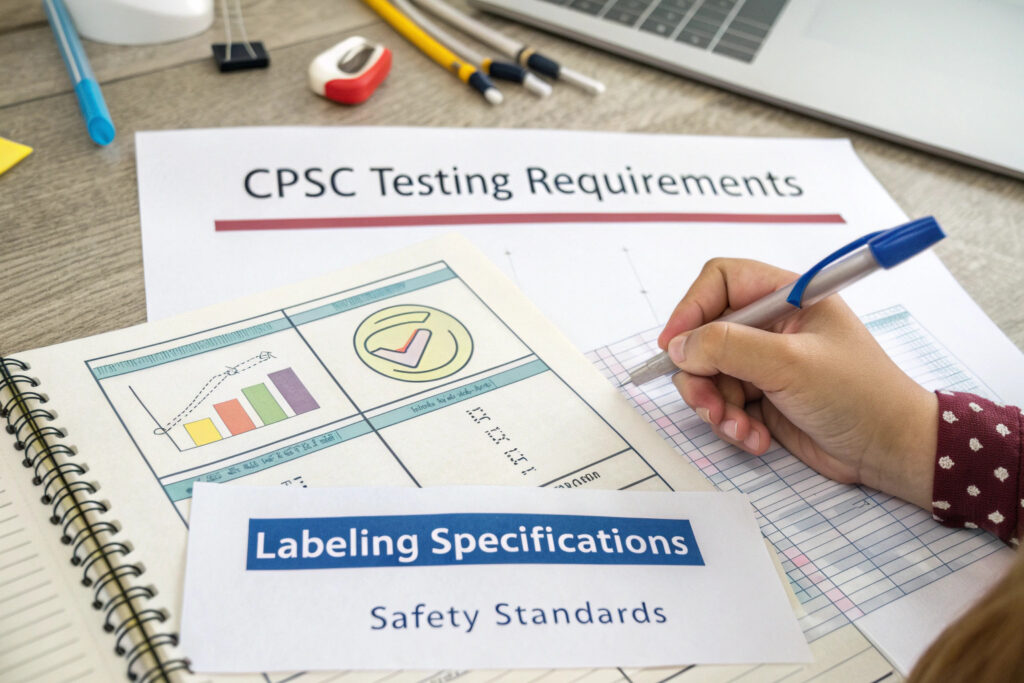The Consumer Product Safety Commission (CPSC) has significantly increased its oversight of children's cloth face coverings following growing concerns about safety incidents and potential health risks. While cloth masks for children don't require specific CPSC certification, they must comply with general consumer product safety standards and several specific regulations that have become enforcement priorities. Understanding these requirements is crucial for manufacturers, importers, and retailers to avoid penalties, recalls, and potential liability.
The latest CPSC requirements for children's cloth face coverings focus on lead and phthalate content compliance, small parts safety, flammability resistance, proper labeling, and meeting ASTM F3502-21 barrier face covering standards. While not all requirements are mask-specific, they fall under the CPSC's general authority to regulate children's products for safety, with particular attention to products making health or protective claims.
The CPSC's approach to children's masks has evolved from general oversight to targeted enforcement based on incident reports and market surveillance. Products marketed for children automatically trigger additional regulatory considerations beyond those for adult masks. Let's examine the specific requirements and how they impact the design, manufacturing, and marketing of children's cloth face coverings.
What Chemical Compliance Standards Apply to Children's Masks?
Children's products face stricter chemical regulations than adult products, with specific testing and documentation requirements.
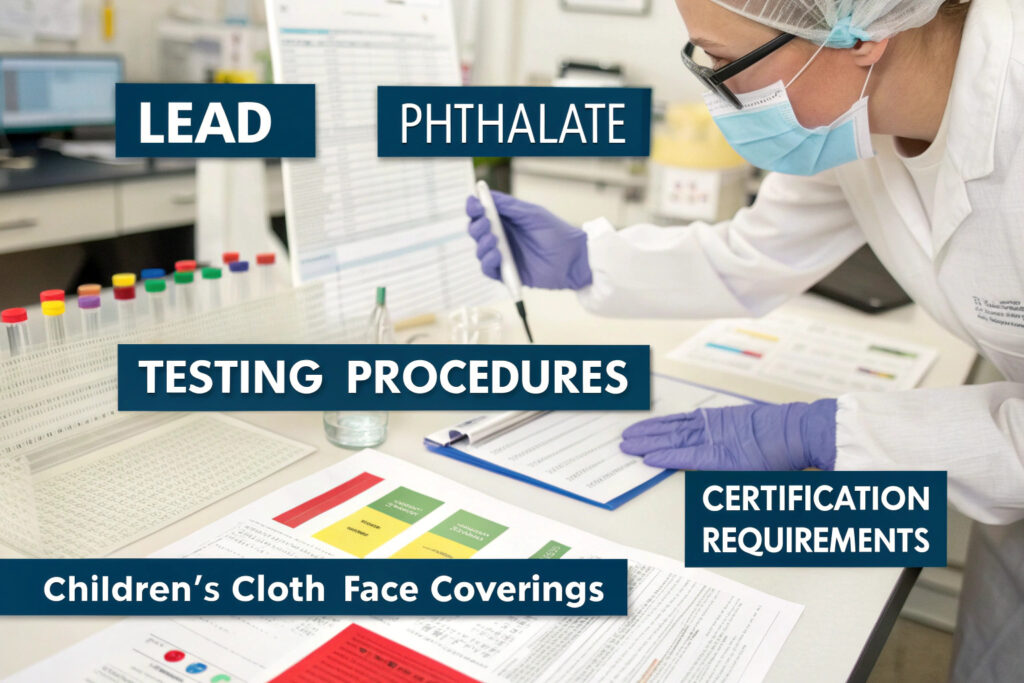
How do CPSIA lead and phthalate limits apply?
The Consumer Product Safety Improvement Act (CPSIA) sets stringent limits for lead (≤100 ppm in substrate) and specific phthalates (≤0.1% for eight specified phthalates) in children's products, including cloth face coverings. These limits apply to all accessible components—fabrics, threads, nose wires, elastics, and any decorative elements. Manufacturers must conduct third-party testing from CPSC-accepted laboratories and maintain detailed documentation. Our compliance protocol tests every material component separately, as a single non-compliant element can trigger recall of entire production batches.
What about other chemical concerns?
While not specifically mandated by CPSC, formaldehyde and AZO dye restrictions often become enforcement issues under the Federal Hazardous Substances Act. The CPSC has targeted products containing these substances when present at levels that could cause allergic reactions or skin irritation. Our material selection process excludes fabrics with formaldehyde-based finishes and uses only AZO-free dyes, particularly important for products contacting children's facial skin for extended periods.
What Physical Safety Standards Must Be Met?
The physical construction of children's masks must address specific hazards that differ from adult products.
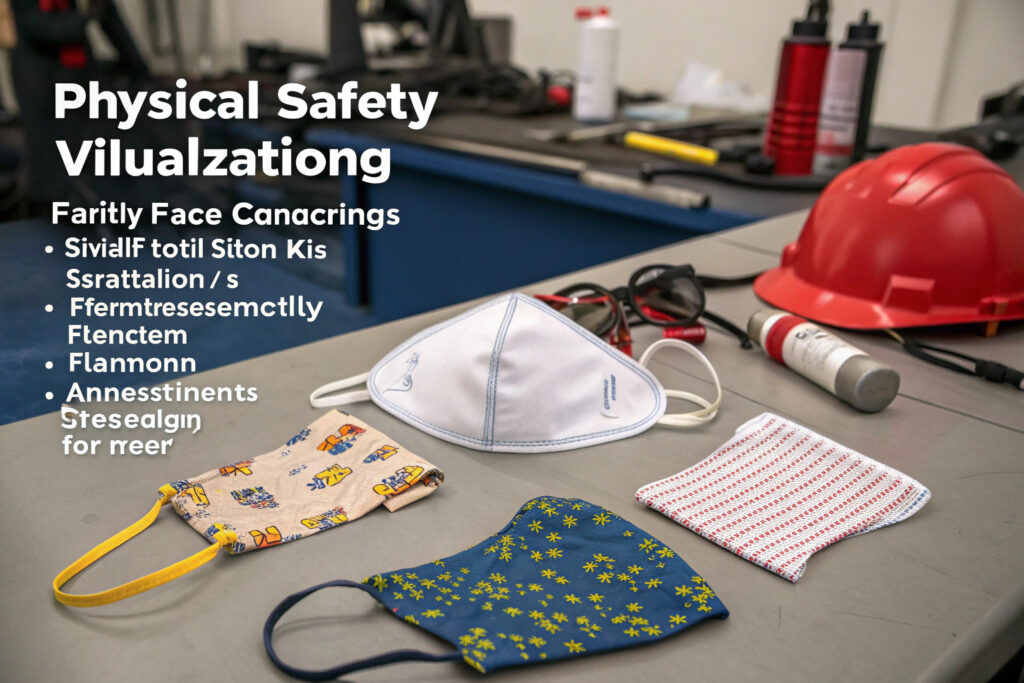
How do small parts regulations impact mask design?
Small Parts Testing under 16 CFR 1501 requires that components intended for children under 3 years cannot present choking hazards. For masks, this affects detachable components like decorative elements, adjustable toggles, or nose wires that could become detached. Our designs for younger children eliminate small detachable parts and secure all components to withstand 10-lb pull tests, significantly exceeding the basic requirement.
What flammability standards apply?
While most woven fabrics qualify for flammability exemptions under 16 CFR 1610, masks using raised surface textiles (like fleece or terry cloth) may require testing. The CPSC has specifically noted that masks making claims about "theater use" or "costume applications" may face additional scrutiny. Our flammability testing protocol ensures all fabrics, regardless of construction, meet Class 1 normal flammability standards, providing an additional safety margin.
What Labeling and Documentation Are Required?
Proper labeling and documentation create the audit trail that demonstrates compliance during CPSC inspections.
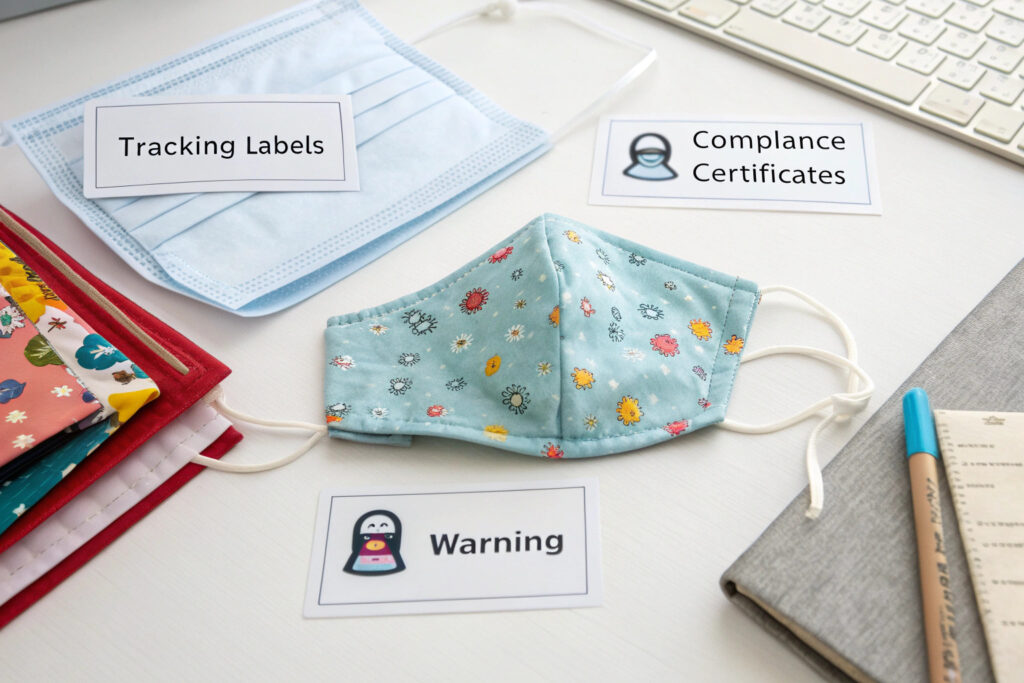
What tracking label information is mandatory?
Permanent tracking labels must include manufacturer/importer name, location, production date, batch information, and contact information. For masks, this typically appears on the packaging or a sewn-in label. The CPSC requires this information to facilitate recalls when necessary. Our labeling system includes QR codes that link to expanded compliance documentation, providing transparency that has helped resolve inquiries without formal investigations.
How should age grading and warnings be presented?
Clear age recommendations based on actual testing—not just marketing preferences—must be provided. Masks marketed for children under 3 require more stringent safety considerations. Additionally, any masks making protective claims should include limitations clearly stated. Our labeling includes specific age ranges (2-4 years, 5-8 years, 9-12 years) based on anthropometric testing rather than generic "child" designations.
How Does ASTM F3502-21 Apply to Children's Masks?
While voluntary, the ASTM barrier face covering standard has become a CPSC reference point for evaluating mask claims.
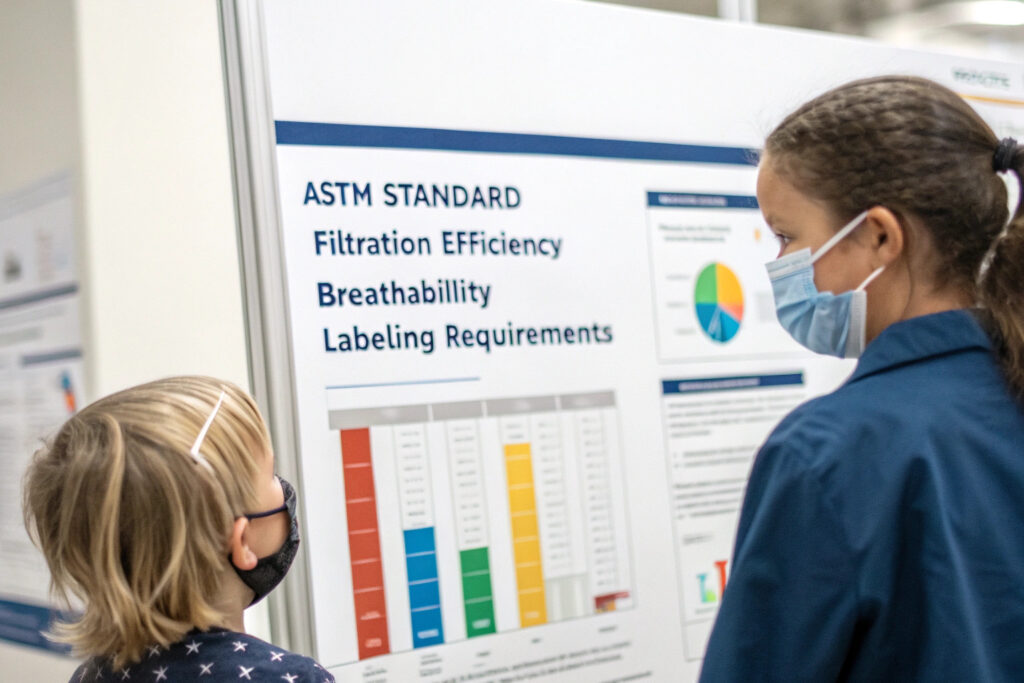
What performance levels are appropriate for children?
The ASTM F3502-21 standard provides a framework for evaluating filtration efficiency and breathability, though the CPSC doesn't mandate compliance. For children's masks, we recommend targeting Level 1 performance (≥20% filtration efficiency) with enhanced breathability (≤15 mm H₂O pressure difference). Our testing shows that exceeding these thresholds often compromises comfort, leading to improper wear that negates any filtration benefits.
How should performance claims be qualified?
Any protective claims must be substantiated with testing data and include clear limitations. The CPSC has targeted masks making unsubstantiated medical or filtration claims. Our marketing guidelines emphasize community protection rather than individual safety and include clear statements that our children's masks are not medical devices or respiratory protection.
What Testing and Certification Protocols Ensure Compliance?
A systematic testing approach prevents compliance failures that could trigger CPSC enforcement actions.
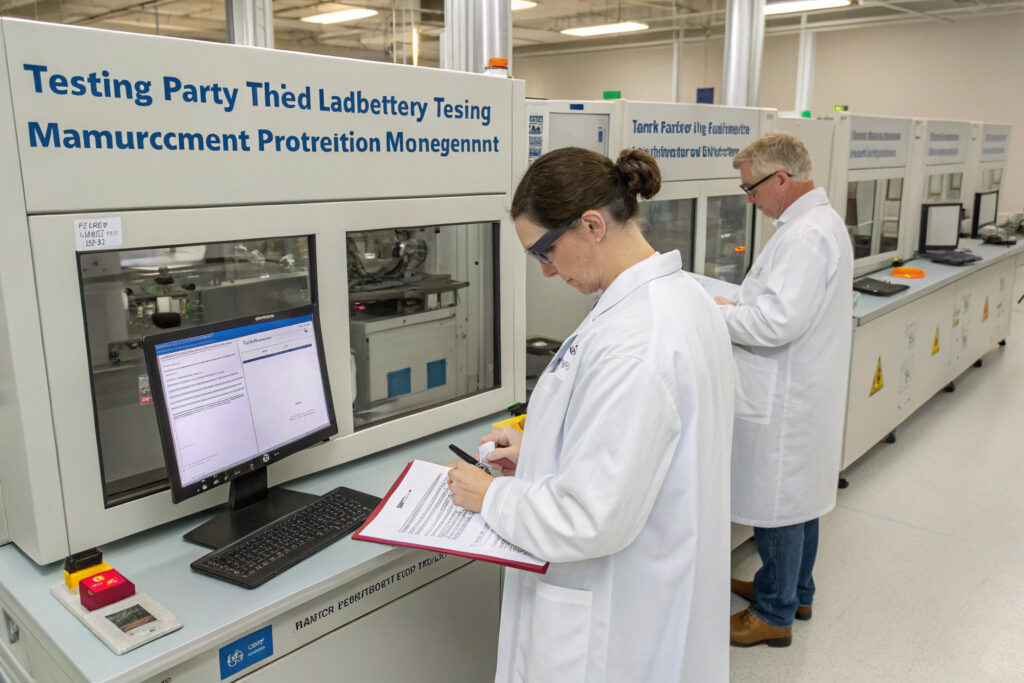
What third-party testing is required?
CPSC-accepted laboratory testing for lead, phthalates, and flammability is mandatory for children's masks. While ASTM F3502 testing remains voluntary, having this data demonstrates due diligence. Our compliance program includes testing at multiple production stages—raw materials, pre-production samples, and random production unit testing—creating a comprehensive safety record.
How frequently should testing be conducted?
Periodic testing and material verification should occur with any material source change and at least annually for continuous production. The CPSC expects manufacturers to maintain updated compliance certificates for all children's products. Our quality system triggers automatic retesting when we change material suppliers or every 12 months, whichever comes first.
What Are the Consequences of Non-Compliance?
Understanding enforcement risks helps prioritize compliance investments appropriately.

What penalties might the CPSC impose?
Civil penalties can reach $120,000 per violation with maximum penalties of $17.15 million for related series of violations. Additionally, the CPSC can seek product recalls, destruction of inventory, and import detention. Our compliance cost analysis shows that investing in proper testing and documentation costs approximately 3-5% of product value, while non-compliance penalties typically exceed 40-60% of product value plus reputational damage.
How does the CPSC identify non-compliant products?
Market surveillance and consumer reports trigger most CPSC investigations. The commission particularly scrutinizes products making specific health claims, those sold through major retailers, and products reported through their SaferProducts.gov database. Our compliance monitoring includes regular review of CPSC enforcement actions and recall notices to identify emerging concerns before they affect our products.
Conclusion
The latest CPSC requirements for children's cloth face coverings emphasize chemical safety (lead and phthalate compliance), physical safety (small parts and flammability), proper labeling (tracking information and age grading), and substantiation of any performance claims. While the CPSC doesn't mandate specific performance standards for cloth masks, referencing ASTM F3502-21 provides a defensible basis for any protective claims and demonstrates commitment to product safety.
Successful compliance requires a systematic approach integrating material selection, manufacturing controls, independent testing, and comprehensive documentation. Companies that proactively address these requirements not only avoid enforcement actions but also build trust with consumers increasingly concerned about product safety.
Ready to ensure your children's cloth face coverings meet all CPSC requirements? Contact our Business Director, Elaine, at elaine@fumaoclothing.com to discuss our compliance expertise and manufacturing capabilities. We'll help you navigate the regulatory landscape while creating safe, comfortable masks that parents trust.

